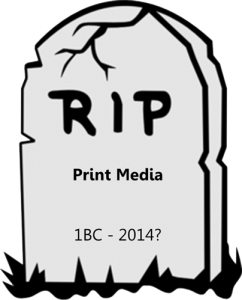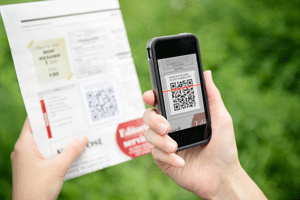 As technology continues to evolve and re-shape sales and marketing practice you may be forgiven in thinking that traditional print media is a thing of the past.
As technology continues to evolve and re-shape sales and marketing practice you may be forgiven in thinking that traditional print media is a thing of the past.
In fact, the print industry is having a boom time on both sides of the Atlantic and flipping the perception on its head print sales and marketing looks likely to grow in 2014 thanks to technological advances that allow for more freedom in the way it’s deployed.
According to researchers in the US, direct mail (DM) continues to be used heavily with a 43% share of total local retail advertising and around 76% of small businesses reporting that their preferred sales and marketing strategy is a combination of both print and digital.
Research by the US Postal Service shows there’s about 10% return on print DM as well as 40% of those who read it trying a new business for the first time. The cost per thousand (CPT) compares extremely favourably when compared with other sales and marketing channels. In 2010, a study by the US Direct Marketing Association found that $1.00 spent on print advertising can generate an average of $12.57 in sales irrespective of the market sector.
Advancements in print technology have paved the way for business owners to customize each piece of DM by changing certain elements from piece to piece, something called ‘mass customisation’ as explained in my latest book, High Impact Marketing That Gets Results.
For example, you could run a DM campaign and personalize each postcard with the name of the recipient, or create unique coupons with individual serial numbers so that you can track which customers used them. When this technique is used with variable images, for example, you could create a series of assorted business cards, each with a different photo background.
Personalized print media can have a more powerful presence than a personalized email because it can ‘feel’ special.
Sales and marketing is about to get more personal and ironically this is where traditional media can have an advantage over email marketing in certain circumstances, such as where the products and services are premium or of a higher value.
 That said, increasingly print media is integrating with digital with powerful results, particularly in the growing use of QR Codes and Near Field Communication (NFC) technologies that have turned print into a more interactive sales and marketing channel.
That said, increasingly print media is integrating with digital with powerful results, particularly in the growing use of QR Codes and Near Field Communication (NFC) technologies that have turned print into a more interactive sales and marketing channel.
It used to be the case that the only way to advertise your company’s web presence via print was to include the URL address and hope it was typed into a browser. Nowadays, QR codes and NFC technology makes it possible for the print media to directly connect the recipient to your website via their SmartPhone by hovering over it.
NFC is relatively in its infancy but retailers are increasingly using this to entice customers as they go about their daily lives with special offers and discounts and it’s soon to become more commonplace.
These technologies can also be used in more creative ways such as playing video content as well as allowing users to engage with other customers.
In summary, given that most print media now carries some form of social signposting to Facebook or Twitter, sales and marketing needs to be re-wired so that it meets the audiences’ expectation of the link between offline print and online media as a matter of course.














Recent Comments